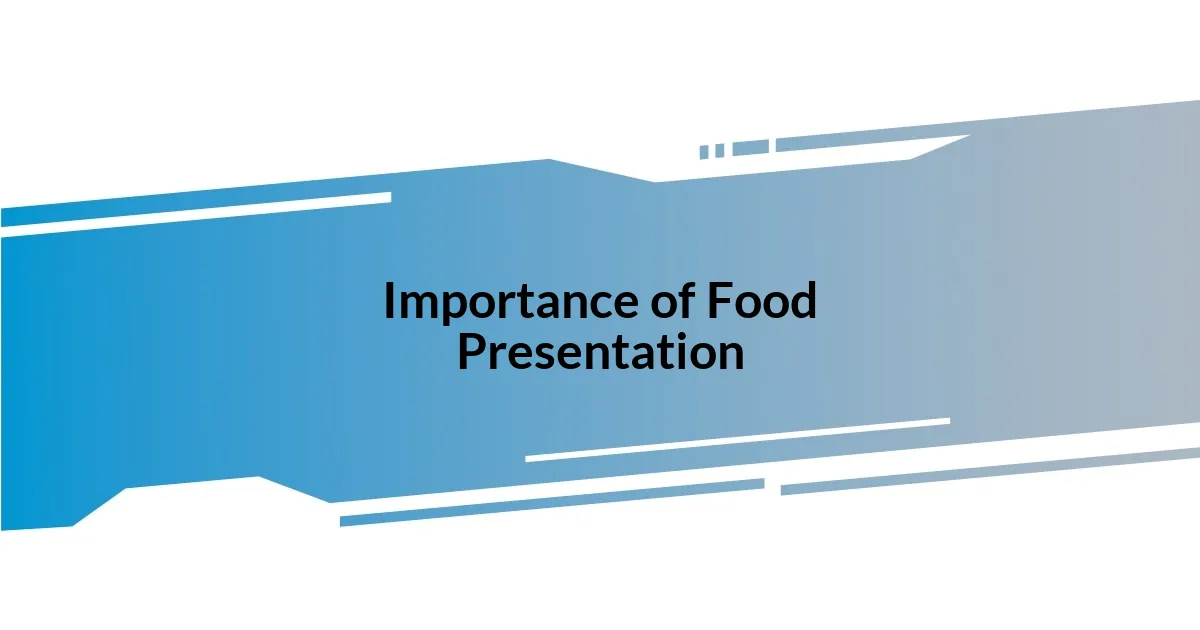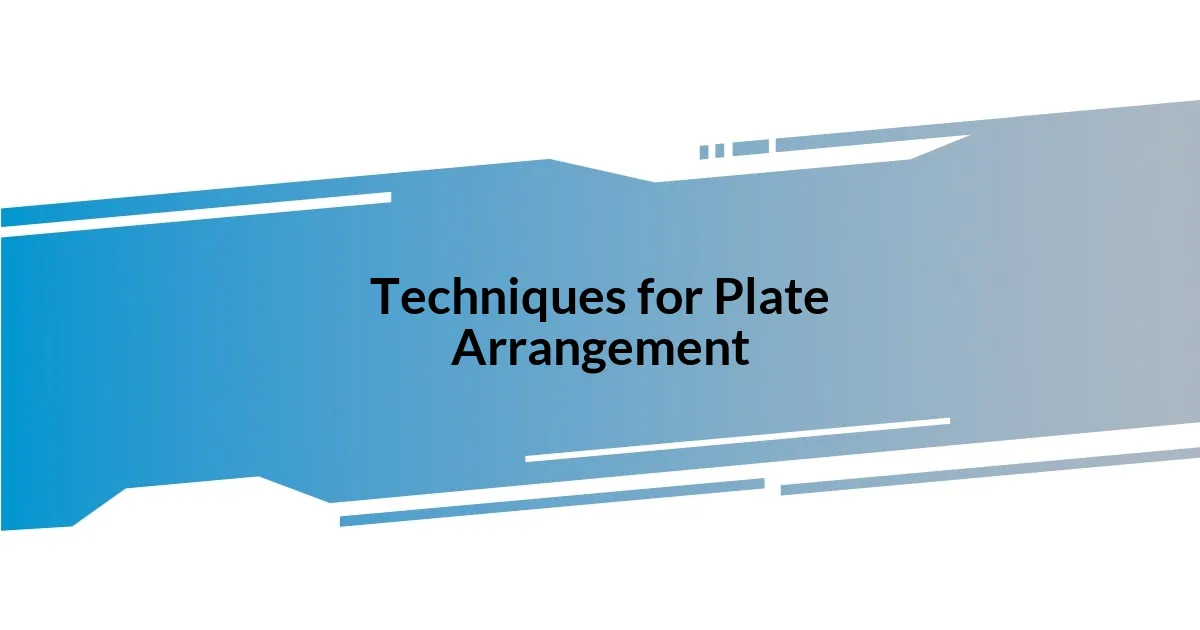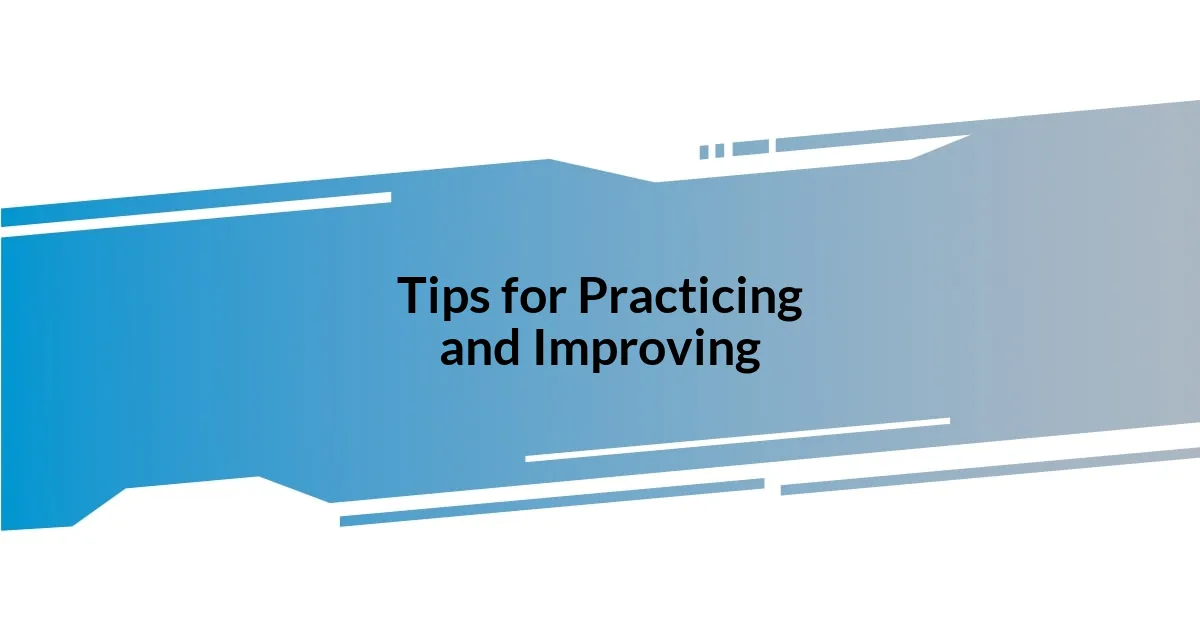Key takeaways:
- Food presentation transforms meals into experiences, enhancing sensory engagement and creating anticipation.
- Tools like tweezers and kitchen shears aid in precise plating, while a camera helps document and share visually appealing dishes.
- Techniques such as using negative space, color contrast, and creating focal points elevate the visual appeal of meals.
- Practicing on everyday meals, experimenting with arrangements, and documenting progress fosters improvement in food styling skills.

Understanding Food Presentation Skills
Food presentation skills are essential because they transform a meal from just sustenance into an experience. I remember the first time I took the time to arrange a simple salad. I was initially skeptical—would a little finesse really make a difference? But I was amazed at how the vibrant colors and carefully arranged ingredients turned heads and invited compliments.
Understanding the nuances of plating can elevate even the simplest dishes. For instance, using negative space, which is the empty area around your food, creates a sense of balance and allows the meal to stand out. I’ve found that a simple white plate not only enhances the colors of the food but also communicates elegance. Doesn’t it feel special when you receive a beautifully presented dish?
Every detail counts; from the choice of plate to the garnishes you sprinkle on top, each component plays a vital role. Once, I tried garnishing a dessert with a single mint leaf, and it completely transformed the dish’s appeal. I often ask myself, “How can I make this plate tell a story?” That question drives my creativity and makes each dining experience memorable.

Importance of Food Presentation
Food presentation is crucial because it connects with our senses in a way that enhances the overall dining experience. I’ll never forget the time I dined at a local restaurant where the dish looked like a work of art. The vibrant hues played off each other beautifully, triggering a desire to taste before I even took a bite. This kind of visual impact goes beyond indulgence; it creates anticipation and excitement around each meal.
- Engages the audience and stimulates appetite.
- Encourages mindfulness and appreciation for the meal.
- Creates a memorable experience that can lead to repeat visits.
- Elevates the perception of quality and effort put into the meal.
- Fosters a sense of connection, making food feel special.
When I began focusing on presentation in my own cooking, I was astonished by the reactions from family and friends. A simple pasta dish transformed when arranged artfully on the plate, complemented by a drizzle of olive oil and a sprinkle of herbs. Their delight was palpable, and it reinforced my belief that food presentation is not just about aesthetics; it’s a way of showing love and care. A beautifully plated dish can stir emotions, creating a lasting impression that mere taste alone may not achieve.

Essential Tools for Food Styling
When it comes to food styling, having the right tools makes all the difference. In my own journey, I’ve learned that a simple set of tweezers can be a game-changer for plating. They allow you to place delicate garnishes precisely where you want them, which can elevate the visual impact dramatically. I remember my first attempt to use tweezers; it felt almost like painting, adding a personal touch that transformed how I approached food presentation.
Another indispensable tool in my kitchen is a good pair of kitchen shears. The precision they offer when cutting fresh herbs or creating intricate patterns in garnishes is unmatched. I was skeptical at first, thinking they were just a gimmick. However, after one particularly enjoyable evening sprucing up a cheese platter, I realized how they allowed me to incorporate fresh elements that truly brought the dish to life. Each snip carefully crafted a visual masterpiece, and I felt proud to present it.
To complement these tools, a high-quality camera for capturing those beautifully styled dishes is essential. Sharing my creations on social media has not only connected me with fellow cooking enthusiasts but also provided instant feedback that propelled my food styling skills further. At first, I hesitated to post my dishes, worrying about the level of artistry. But once I took that leap, those small tools—tweezers, shears, and a camera—combined to document my culinary journey, and I cherished the response from friends and the connections I made.
| Tool | Purpose |
|---|---|
| Tweezers | Precise placement of garnishes |
| Kitchen Shears | Cutting and crafting culinary details |
| Camera | Documenting and sharing presentations |

Techniques for Plate Arrangement
When it comes to plate arrangement, I’ve discovered that less is often more. One of my favorite techniques involves creating height with ingredients. I like to stack items like roasted vegetables or proteins, giving the dish an eye-catching appeal. It’s incredible how a simple pile of ingredients can transform a flat, uninspiring meal into something that commands attention. Have you ever noticed how a little elevation can invite curiosity?
Color contrast is another technique I lean into. I remember plating a beet salad, where the deep reds of the beets were offset by the bright greens of arugula. Using diverse colors not only enhances visual interest but also prompts a tactile experience, making the dish feel more dynamic. This interplay of colors can evoke emotions, perhaps a sense of warmth or freshness. Isn’t it fascinating how our eyes can lead us to anticipate the taste even before that first bite?
Finally, I find that negative space is crucial in plate design. By leaving some areas of the plate empty, I create a breathing room that highlights the food’s beauty. I had an eye-opening experience while crafting a cheese and charcuterie board, where I intentionally left gaps to allow every element to shine. That minimalistic approach made the presentation feel elegant rather than crowded. Have you tried using negative space in your plating? It’s a technique that can elevate your dish to a whole new level.

Using Colors and Textures
When I began to explore the world of food presentation, one of the first breakthroughs I had was understanding the importance of color. I vividly remember arranging a simple fruit platter, where the reds, yellows, and greens came together like a vibrant sunset. The moment I finished and stepped back, I felt an overwhelming sense of achievement. The visual explosion of colors not only made the platter inviting but also seemed to evoke joy. Have you ever considered how much colors can influence your mood before a meal?
Textures play an equally vital role in how we perceive food visually. During one of my earliest attempts at plating, I paired crunchy roasted nuts with creamy avocado for a salad. That contrast of textures was not just about aesthetics; it created anticipation for the delightful mouthfeel with each bite. I can still recall the expressions on my friends’ faces as they dug in; they were thrilled by that surprising crunch against the silky backdrop. Isn’t it interesting how our senses interconnect to create an entire experience?
Another aspect I’ve found fascinating is the interplay between colors and textures. I once crafted a dish featuring seared scallops on a bed of puréed peas, topped with a drizzle of bright orange carrot reduction. The combination was not only visually stunning but also exciting to the palate. Seeing those contrasting elements harmonize was exhilarating for me as a cook. How often do we overlook the power of layering colors and textures to tell a story on the plate? In my experience, this technique not only captivates the eyes but also sets the stage for a memorable dining experience.

Creating a Focal Point
Creating a focal point in food presentation is essential, as it draws the diner’s eye and emphasizes what you want them to notice first. I remember my first attempt at plating a risotto. I shaped it into a small mound at the center of the plate and surrounded it with vibrant greens. The contrast created instantly caught everyone’s attention, turning the dish from simple to standout. Have you ever thought about how a singular focus can invite curiosity and make a meal feel special?
In my experience, the choice of garnishes can also play a significant role in establishing this focal point. One time, I added a delicate sprig of microgreens atop a rich chocolate mousse, and it transformed the dessert. Instead of just another sweet offering, it became an experience where the tiny garnish hinted at freshness against the richness below. I still think about how just a small touch could elevate the entire presentation. Isn’t it amazing how the smallest detail can lead to a huge impact?
Moreover, I find that utilizing shapes can further enhance a dish’s focal point. I experimented with cutting vegetables into geometric shapes, creating a playful arrangement around a central protein. One of my favorites was slicing a carrot into stars and arranging them around a grilled chicken breast. It immediately brought whimsy to my plating, capturing the attention of my guests. Have you ever tried using playful shapes to create a memorable centerpiece? It’s an enjoyable exercise that sparks creativity and transforms the ordinary into something truly delightful.

Tips for Practicing and Improving
One effective way to practice food presentation skills is to use your everyday meals as a canvas. I recall a time when I challenged myself to transform my basic breakfast of scrambled eggs. I sliced a ripe avocado neatly, added a sprinkle of chili flakes, and arranged the eggs in a colorful circle around it. It was fascinating to see how a little thought in arrangement turned a simple morning ritual into a feast for the eyes. Have you ever found joy in making even the most routine meals visually appealing?
Experimentation is another fantastic technique to improve your skills. I fondly remember a night I decided to host a dinner for friends, using it as an opportunity to play with online tutorials. I tried to recreate a rustic cheese board I had seen on Instagram. Although mine didn’t turn out as professionally styled, it was incredible to hear my friends rave about the flavors and the way the colors popped against one another. It taught me that practice indeed makes perfect and that sharing your process can lead to learning moments. Have you had a similar experience that taught you the value of experimentation?
Lastly, documenting your progress can provide you with insights into your growth. After a few months of dedicated practice, I began taking photos of my creations. Looking back at those images, I was surprised by how much my eye for detail improved! I started to notice patterns in what worked and what didn’t, enabling me to refine my techniques. How has reflecting on your culinary journey helped you grow? Embracing this self-analysis can be crucial in developing and enhancing your presentation skill set.